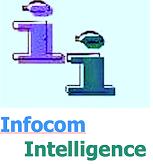According to Bloomberg and Booz & Co, the 10 most innovative firms are:
1-Apple
2-Google
3-3M
4-GE
5-Microsoft
6-IBM
7-Samsung
8-P&G
9-Toyota
10-Facebook
In their 2011 Global innovation 1000 survey, Booz&Co report that it is not necessarily the big spenders in Research and development in percentage of sales that are the best innovators. Instead, having a strong culture that supports innovation and strategic alignment between the innovation strategy and the global corporate strategy is more important than total spending in R&D. For instance, Apple’s rank in R&D/sales (2.7%) is just 70, but the firm is the most innovative firm according to a survey to 600 senior managers.
According to the survey there are 3 generic innovation strategies:
1- Need Seekers actively and directly engage both current and potential customers to help shape new products and services based on superior end-user understanding. These companies often address unarticulated needs and then work to be first to market with the resulting new products and services.
2- Market Readers closely monitor both their customers and competitors, but they maintain a more cautious approach. They focus largely on creating value through incremental innovations to their products and being “fast followers” in the marketplace.
3- Technology Drivers follow the direction suggested by their technological capabilities leveraging their sustained investments in R&D to drive both breakthrough innovation and incremental change. They often seek to solve the unarticulated needs of their customers through leading-edge new technology.
Need Seekers are Apple and IBM and Technology drivers are Google, Microsoft and Samsung. These top performers generally consistently underspend their peers on R&D investments while outperforming them on a broad range of measures of corporate success, such as revenue growth, profit growth, margins, and total shareholder return. On the other hand, industries such as pharmaceuticals, continue to spend massively in R&D/sales but create low corporate value. Success in innovation isn’t about how much you spend, but rather how you spend it.
It appears that critical factors for R&D managers are the ways decision makers think about their new products and services — and how they feel about intangibles such as risk, creativity, openness, and collaboration. Need Seekers are more likely to financially outperform their rivals than companies following one of the other two strategies. In Booz’s survey more than 41 percent of Need Seekers said theirs strongly supported their innovation strategy, compared with just 7 percent of Market Readers and 14 percent of Tech Drivers. Need Seekers ranked as their highest innovation goal the creation of “advantaged products and services,” and their number one cultural attribute as “openness to ideas from external sources.” These characteristics clearly lead to create truly differentiated products by leveraging all potential sources of good ideas. Need Seekers even outperformed in terms of the management of the innovation process: They rated their portfolio management processes highest for both consistency and rigor. The most successful innovators ensure that their culture not only supports innovation, but actually accelerates its execution. Booz & Co’s analysis shows that a well-executed Need Seeker model, although it may be the hardest model to create, is also the most likely to deliver superior differentiation, profitability, and growth in enterprise value. That’s because it is the model most able to get to market first with products that address unarticulated customer needs through superior customer understanding, and the most likely to have the cultural attributes and cross-organizational alignment that can sustain its success.
The most successful Tech Drivers, like Google, Microsoft and Samsung have developed both the capabilities shared by all outperforming innovators, such as the ability to translate consumer and customer needs into product development and engagement with customers, and the capabilities specific to their own strategy: a deep understanding of emerging technologies and trends, and the capacity to manage the life cycle of their products and projects.
For the survey see:
http://www.booz.com/global/home/what_we_think/featured_content/innovation_1000_2011
Louis Rhéaume
Infocom Intelligence
louis@infocomintelligence.com
Twitter: @InfcomAnalysis

A blog on the convergence of info-communications industries: communications, computing, electronics, entertainment, publications and education. Strategic, technological and financial analysis. English and French blog. Cette chronique traite de l’évolution des industries de l’information et des communications et couvre des aspects stratégiques, technologiques et financiers, comme l’économie du savoir et de l’innovation. L’auteur est Associé principal de Infocom Intelligence.
Labels
finance
(58)
strategy
(39)
innovation
(36)
technology
(29)
Internet
(25)
mobile internet
(25)
stratégie
(21)
applications
(20)
business models
(19)
mobile technologies
(17)
venture capital
(17)
Apple
(13)
télécommunications
(13)
consumer internet
(12)
media
(12)
telecommunications
(12)
mergers and acquisitions
(11)
video games
(11)
wireless
(11)
technologie
(10)
Android
(9)
technologies de l'information et des communications
(9)
téléphones intelligents
(5)
Monday, November 07, 2011
Subscribe to:
Post Comments (Atom)
No comments:
Post a Comment